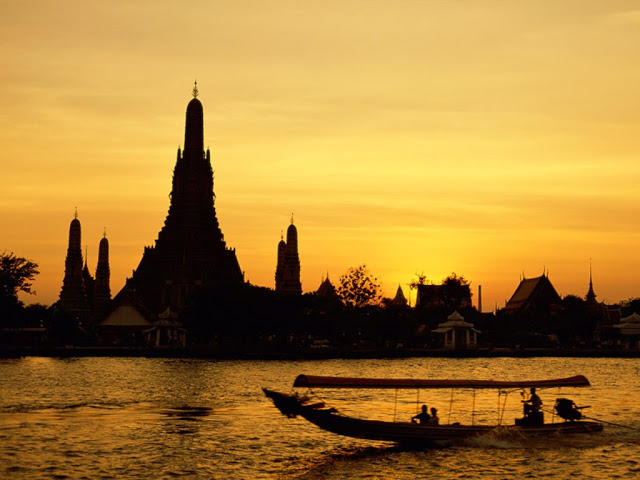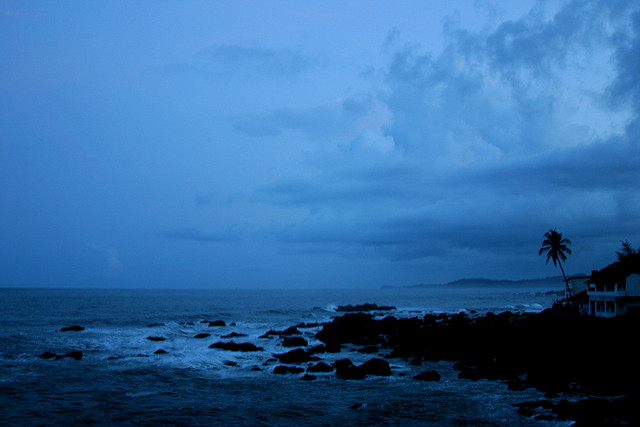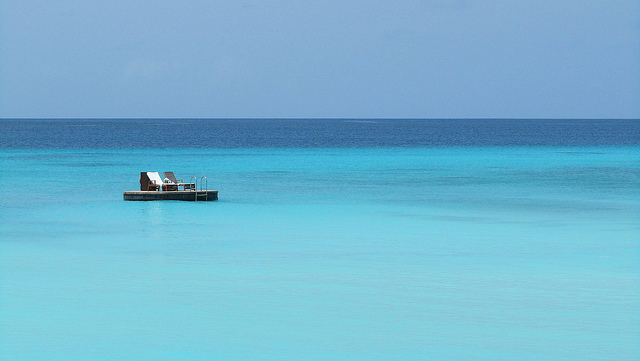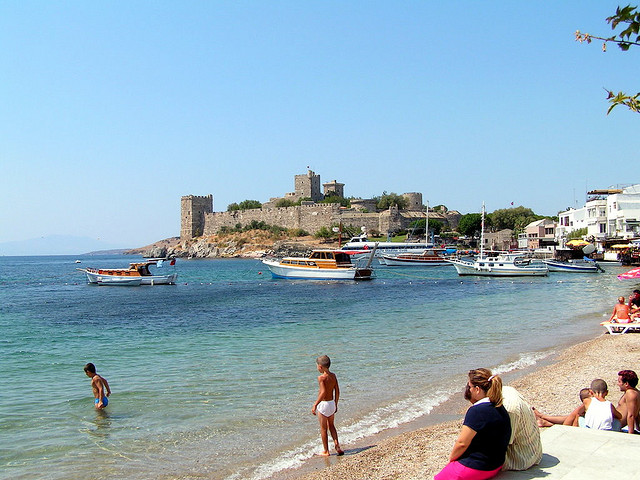Category Archives: Asia Guides
Top Tourist Attractions in Thailand
The top tourist attractions in Thailand reflect the kind of beauty that an unconquered nation possesses. Thailand has a very symbolic epithet that is well known in world history – The Land of the Free. Unlike other nations in Southeast Asia, only Thailand remains free from the protectorate of foreigners (particularly Europeans). The ancient Kingdom of Siam is a respected trade partner of the Portuguese and a hospitable host of the Japanese Diaspora in Medieval Japan (majority of which are Christian exiles). Their partnership with these foreign people enabled them to deter their northern rivals, the Burmese, from completely conquering them. Thailand has a positive reception of all foreigners that came to their shores, even the Japanese of World War II. Their culture of foreign hospitality is better experienced by tourists visiting their most wonderful locations.
1. Kho Phi Phi
Kho Phi Phi is the most popular among the top tourist attractions in Thailand. Kho Phi Phi is a small archipelago in Krabi Province located in the southern part of the country. The bigger island, Khoi Phi Phi Don, is known for its permanent inhabitants while the smaller atoll, Kho Phi Phi Ley, is a very popular beach resort. Kho Phi Phi Ley experienced a sudden torrent of vacationers around the second millennium, especially following the famous movie The Beach where most of the scenes were shot. The continuous surge of visitors tarnished the island’s beauty, yet it still remains the top destination for most vacationers.
2. Phang Nga Bay
While the Kho Phi Phi archipelago is famous for attracting luxury tourism, the Phang Nga Bay is a favorite location of offbeat eco tourists. The Phang Nga Bay is located in the island of Phuket. It has an abundant number of sea caves, grottoes and limestone isles. One of the most iconic atolls is called the James Bond Island, because it was one of the locations of the movie The Man with the Golden Gun. The sea caverns are accessible via kayaking. There are countless hotels in Phuket, but the Double Tree Resort Phuket is one of the nicest and best value for the money.
3. Chiang Mai Night Bazaar
If one is looking for top tourist attractions in Thailand that offers excellent shopping, the Chiang Mai Night Bazaar is the most preferable choice. Originally, this site was an ancient district where Chinese merchants lived. Now, the markets are owned by plenty of people. Groceries and food stalls are also abundant in this place. This district mainly sells a wide array of wares from
clothing to handicrafts and other things worthy of a souvenir. It is a perfect place to stop by before heading home.
4. Ayutthaya
Ayutthaya is one of the most important heritage sites in Thailand and a place that has the highest historical value. This city was created in 1350 AD by King U Thong and was a major commercial center for three of Asia’s most powerful civilizations – China, India and Malay (Java, Borneo and Philippine Islands). At the height of its prominence, Ayutthaya was destroyed by their Burmese rivals, which is now left in ruins.
For more information on Thailand, check out our Thailand Travel Guide.
Family-Friendly Attractions in North Goa
North Goa is a wonderful destination to visit with the whole family, as there are so many great attractions that will appeal to parents and kids alike. Of course, its gorgeous beaches are one of the first things you’ll think of, but there is much more to the state than its coast.
If you’re thinking of planning a family holiday to north Goa, check out our suggestions of places to visit while you’re away. Should you still need to arrange accommodation and other practicalities, visit this website to get an idea of your options.
The beaches
You’ll want to spend at least a couple of days enjoying the seaside in Goa, India, as this is what the state is most famous for. There are numerous stretches of sand in the north, with the following a few of the best family-friendly places to head to.
Miramar, close to Goa’s capital Panaji, has plenty of amenities close to the sand, making it a good spot for families. Its location on the edge of the estuary of the River Mandovi means you’ve got an amazing view of the imposing Aguada Fort, which stands on a headland, as well as access to the calm waters of the Arabian Sea.
Sinquerim Beach is another great place for families to visit, especially if you have older children who will enjoy a few water-based activities. Parasailing, windsurfing and water skiing are among the sports you can have a go at if you’re feeling adventurous.
The broad sweep of sand is also great for little ones who just want to build sandcastles and paddle in the sea, while parents can grab refreshments from the various beach shacks and restaurants that run along the bay.
Bhagwan Mahaveer Sanctuary and Mollem National Park
Goa is home to some truly fascinating wildlife and this is something that’s bound to capture the imaginations of your children. Pay a visit to the Bhagwan Mahaveer Sanctuary and Mollem National Park and you could spot the likes of Bengal tigers, porcupines, sambars, flying squirrels, bonnet macaques, Indian rock pythons, greater Indian hornbills and kingfishers.
This is just a brief overview of the creatures that inhabit the reserve, which is located to the north of Panaji. As well as the amazing wildlife, you can also visit the Dudhsagar Waterfall, which is the highest in Goa. The water tumbles down a cliff in the Western Ghats, throwing up clouds of white mist that make it look quite magical.
Go on a dolphin-watching tour
The waters off the coast of Goa’s beaches are just as full of life as its forests, with dolphin watching one of the most popular activities on offer. Book your family on a boat tour and you’ll head out from the beach in search of these playful marine mammals.
You can easily join one of these trips from north Goan beaches such as Calangute, Candolim, Baga and Sinquerim – although be prepared for the fact that many of the tours depart in the early morning to give you the best chance of seeing the dolphins.
Visit a spice plantation
An educational, but fun, thing to do in Goa is to visit one of the spice plantations. This is an excellent opportunity to show your children where food and flavourings come from, with many of these sites growing produce such as pineapples, coconuts, cashew nuts, chillies, cloves, cinnamon and pepper.
Typically, a spice plantation tour will involve wandering among the various plants with a guide who can tell you what everything is, followed by a traditional meal cooked using fresh ingredients from the plantation.
The Maldives: what to expect in terms of culture
Postcard-perfect beaches, balmy weather, lush greenery – the Maldives is an archipelago that virtually everyone wants to visit. And that’s very conservative on my part, I think; I mean, if money was no object, who wouldn’t come here? Most of the time, all you hear about is its beaches and luxury hotels; its diverse culture, meanwhile, is rarely mentioned.
Today is the day that changes, however, as culture is going to be the focus of this post. If what you read inspires you and you decide to sort out the practical details of your holiday right away, such as finding a hotel, just do a Google search for the Maldives and plenty of info will pop up.
A glance at history
Any destination’s culture is largely shaped by its history, so when I tell you that the Maldives has a fascinating past under the rule of a number of countries and suffused in myth, you should recognise that now is the time to get excited.
The first thing to know is that the islands of the Maldives dot the trading route of the Indian Ocean – something that has meant that visitors from far and wide having been coming here both in the form of short stops and of settling for centuries on end. So, the country is no stranger to overseas influences, which have made their impact on the culture over the years.
Just to give you an idea of what influences are at play, the original settlers here belonged to the Buddhist faith, but the nation converted to Islam back in 1153. In 1558 the Portuguese invaded, before being forced out in 1573. The archipelago then became a protectorate of Great Britain in 1887, gaining independence in 1965. In 1972, the first-ever island resort was built – a real landmark when you think how important local tourism is now.
Language, arts and more
So, you now have a (very) broad outline of the Maldives’ history, which means it’s time to look more directly at what you’ll experience in terms of culture. We’ll begin by taking a quick look at things like language, which you’ll come into contact with as soon as you arrive.
The national tongue is Dhivehi, but you’ll find the dialect can vary depending on whereabouts you are. For instance, on the inhabited islands in the far south you’ll notice a distinctly different dialect from places like Male’ – something that’s often attributed to the former’s relative isolation.
If you go island hopping, expect to discern differences in people’s appearances from one atoll to the next. This is down to the Maldives’ trade route location, which saw peoples from places like Africa, Arabia and south Asia settle here.
So, it’s easy to see the country is something of a melting pot. What I like doing is exploring the local arts and picking out different slices of heritage – as well as seeing how these diverse elements come together to create something new.
For instance, head into a mosque and you’re likely to see intricate patterns on the wooden beams, which can be traced back to south-east Asian influences. In terms of music, keep your eyes (and ears!) peeled for the bodu-beru, which is like an African drum.
Go island hopping, meanwhile, and you’re likely to do so in a dhoni – a traditional Maldivian boat. Look closely, though, and you’ll see it looks very similar to an Arabian dhow.
Beautiful, bright Bodrum, Turkey!
I’ve been going to Turkey for the last seven years, and I’ve watched it change as tourism has become big business over recent years. The number of visitors to this wonderful, mysterious country has increased dramatically, and Bodrum is one of those booming resorts.
Fantastic beaches, lively night-life, delicious restaurants, history, culture, and lots of shopping, all with the potential to explore further afield – it’s no wonder Bodrum is so popular.
There are some fantastic package holidays to Bodrum this summer, ranging from all-inclusive, half-board, full-board and self-catering. Personally, I tend to book self-catering, as there are some wonderful restaurants around and I enjoy the freedom to go where I please in the evening, however if you’re travelling with children, I’d recommend all-inclusive, to keep costs on holiday low.
Getting to the airport itself can be a hassle, and you’ll find that many flights to Turkey are at awkward times of the day from the UK. A great way to save money and combat stress is to pre-book Airport parking at your terminal, meaning no need to book an expensive airport taxi, and putting the control firmly back in your hands. You’ll find a service no matter where you fly from, and I recently used Stansted Airport parking at Airparks, with no complaints from me whatsoever! I’d highly recommend you look into what’s available from your airport.
Once you land at Bodrum Airport, it’s under an hour’s transfer to your hotel, depending on where you’re staying. It’s easy to get around resort, thanks to the handy dolmus, or mini-bus, running around resort, but Bodrum is quite compact, so I’d suggest a pair of comfortable flip flops and head out on foot and explore. The dolmus is invaluable for exploring the surrounding area, such as the nearby resort of Gumbet, with its wide beach and plentiful water-sports. Alternatively, haggle the price of your excursions from a street vendor and head out on a jeep safari into the surrounding countryside, through villages and hills. A boat trip is also a must-do excursion, as well as a traditional Turkish bath for that longer lasting tan.
In Bodrum itself, the castle should be your first port of call, stood imposing over the town. It also hosts the popular Museum of Underwater Archaeology, which is a surprisingly interesting morning or afternoon’s entertainment, and one the kids will love too.
For retail therapy hits, the marina has the best in terms of designer buys, however I love the markets for unusual souvenirs, and the haggling is fun once you get used to it.
As with most Turkish resorts, night-life is bright, vibrant and lively, yet also very varied. If you want to party, you’ll find plenty of clubs and bars, especially down on the water-front, yet if you just want a good meal and a few drinks, you’re more than catered for too. I’d really recommend trying some traditional Turkish cuisine, such as tasty chicken shish kebab, followed by some naughty-but-nice kunefe, and a glass of raki. Turkish food is cheap, plentiful and certainly delicious!
For a sunshine break with an added difference, Bodrum is a fantastic choice. Remember those airport extras and your holiday will not only be cheaper, but will start in a much more rested manner, without the stress of the airport marring the start of your break. You’re not forgotten in the parking stakes no matter you fly from, with services such as Luton Airport parking fantastic value for money.
Sunshine is a given, a great holiday is guaranteed – head to Bodrum this summer.
This was a guest post from Michelle Camens








 Welcome to Home Town Travel Guides.com , your source for travel guides written by locals and those who've been there and done that! ~Jeremy
Welcome to Home Town Travel Guides.com , your source for travel guides written by locals and those who've been there and done that! ~Jeremy